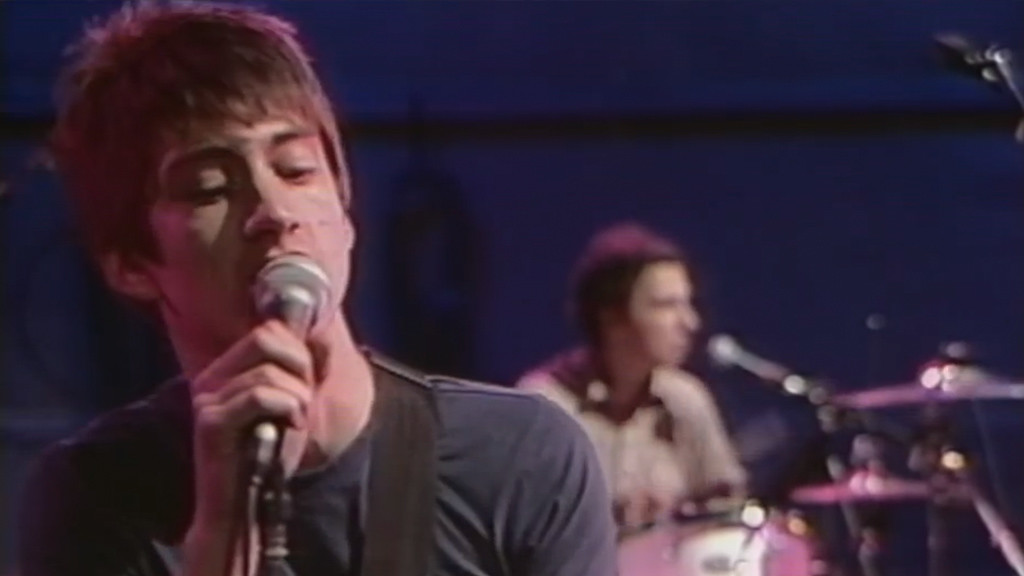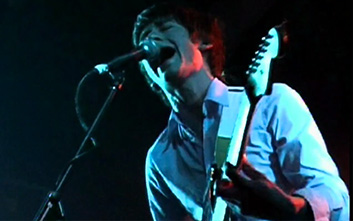A love letter to the dual nature of hedonism and neurosis that flourishes in youth, the Arctic Monkeys’ debut Whatever People Say I Am, That’s What I’m Not remains a formidable staple of the mid-2000s indie-rock movement.
Right now think “indie rock” and an idea of a some stooge wearing a wide brim hat indoors during the night comes to mind.
Wind back a few years, and indie rock was in that imperceivable age where there was no Facebook and flip phones were all the rage; then, “indie rock” was short for “independent rock n’ roll” and included all sorts of bands – any sort of rock-based genre – who recorded their music on the cheap, using cheap instruments and who were very much underground.

The Arctic Monkeys of today have traveled far from their indie roots. First of all, they’ve established themselves and are quite successful. Second, they’ve gravitated to more of a hard, cock-rock sort of sound (though that might be the frontman’s Elvis quiff speaking). Third, in 2014 it was revealed that the band had been evading tax, stashing away their millions in a tax haven.
So to tell the story of the Arctic Monkeys’ debut album – ten years old this year – one has to look at the period in between those ten years past, and the conditions before the album that made both Whatever People Say I Am, That’s What I’m Not and the Arctic Monkeys what they are. The indie rock of today flowed from the same unsettled, progressive itch that birthed punk and grunge; a rebellious and energetic youthful push-back against the all-pervasive moralism of popular culture in the pre-Simpsons days. Punk had been co-opted by the mainstream after a few years of raging rebellion, as had grunge.
At the turn of the millennium it was the turn of a new wave of bands that played similarly stripped-back music, imitating the styles of garage and punk rock (hence ‘revival’ making its way as a common addendum to established genres). The Vines were at the forefront of this explosion in Australia, which internationally included Swedes The Hives and Americans The Strokes.
Following this pioneering breakthrough, many others followed: Jet, Arcade Fire, The National and our boys Arctic Monkeys (and many others) all came to the public’s attention. Despite coming late to the party – four years after The Vines’ first release – the Arctic Monkeys found a rather effective launching pad in Whatever People. Their debut album managed to find itself in a very snug niche due to the conscious or unconscious coupling of its raw, energetic nature with a resonating exploration of youthfulness. Rather poetically vocalist Alex Turner picked out the album’s title from a novel he was reading, whose themes he felt intertwined with that of the record; Alan Sillitoe’s Saturday Night, Sunday Morning.
Whatever People… sounds like a loaf of garage and punk rock revival; the songs are tightly-wound, quick, determined, short and mostly sound the same. There’s a few goldens (The View From The Afternoon, I Bet You Look Good On The Dancefloor, Dancing Shoes and When The Sun Goes Down are all immediately grabbing) and only two spanners (the surf rock tinge of Certain Romance, and the outright dance-poppiness of I Bet…), but for the most part Whatever People… is muchly the same.
While the music may be not be boring but unadventurous, there is a real delight to be found in the Turner’s lyrics. Turner, a master lyricist then as he still is now, gracefully bends the English language to his will as he concisely and colourfully recalls the exciting liveliness of youth as well the grimier features of a Saturday night out on the town. The rhymes swerve in and out with the grace of a butterfly, seeking and destroying the very best in lyrical syncopation. Any and every song could be picked out, but for example’s sake there’s this pearler from I Bet…, “Oh there ain’t no love / No, Montagues or Capulets / Just banging tunes and DJ sets / And dirty dancefloors and dreams of naughtiness”
This humility extends to a very local focus on the lads’ home town of Sheffield, now a struggling post-industrial city like most of northern England. There’s many local references, “I said it’s High Green mate, via Hillsborough please” (Red Light Indicates The Door Is Secured) – and many of the songs detail the enjoyable and grimier aspects of a night out in Sheffield. All songs, of course, contain snippets of Turner’s Yorkshire accent; that’s why it’s more ‘Mardeh Buum’ than ‘Mardy Bum’. Still to this day the band, like a WWE wrestler, continue to bill themselves from High Green, Sheffield.
In hindsight, Whatever People… expertly matched up with the millennial attitudes currently drowning modern youth. The eternal quality of youthful energy matches up with the delicate balance between hedonism, and the neurotic anxiety of growing up, especially in a fast-changing society.
Since its release there has been a massive shift in popular culture; most pertinently, rock is ‘dead’ to some people (or at the very least, comatose). Despite this the record still mostly stands the test of time, perhaps mostly attributed it to successfully positioning its sound and attitude to the pessimistic/apathetic change in Western social consciousness caused by 9/11.
Whatever People… resides, therefore, in an interesting point in time on cusp of postmodernism’s fading out and whatever-it-is that exists now. For that reason, it’s half-relatable; however the existence of an exciting underground rock scene, and the gap between its secrecy and mainstream commercialisation, and considering the rather swift monetisation of hipsterism, is perhaps something the music world won’t see for a good time yet. That may make Whatever People… far more important and surprising in future years.



